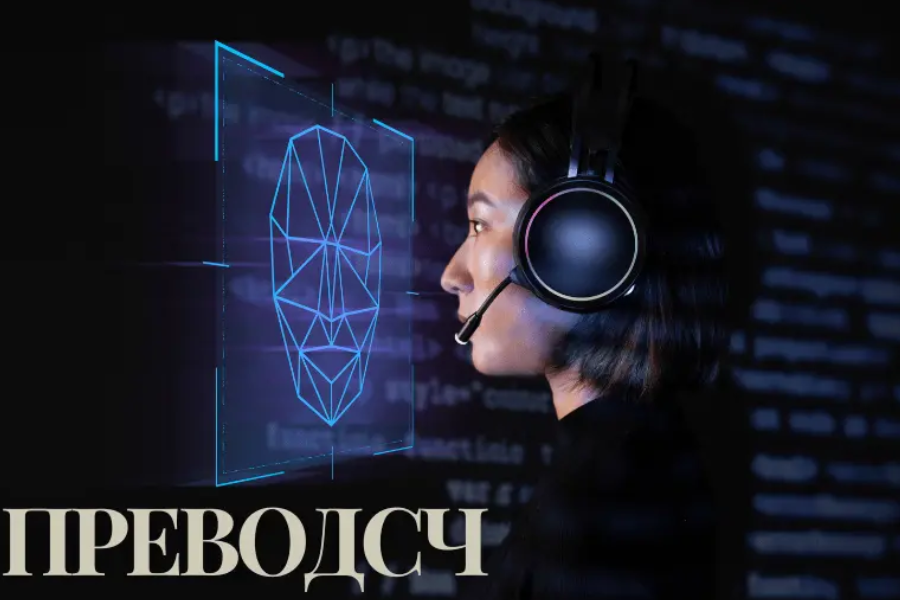Transforming Global Interactions: The Role of Translators in a Multilingual World
In today’s interconnected world, effective communication is essential for global interactions. Enter “преводсч,” a term derived from the Russian language, meaning “translator” or “interpreter.” As businesses, organizations, and individuals interact across linguistic boundaries, the need for seamless translation becomes increasingly apparent. This article explores the transformative role of “преводсч” in breaking down language barriers and facilitating meaningful communication. From its historical roots to its modern applications, we delve into how “преводсч” is shaping the way we connect and collaborate on a global scale.
Understanding преводсч
To comprehend the significance of преводсч, it’s crucial to delve into its origins and functionality. Initially, преводсч emerged from the Russian language, signifying the pivotal role of translators and interpreters in facilitating cross-cultural communication. Transitioning from medieval contexts to modern applications, they have evolved to encompass various translation services, bridging linguistic gaps in diverse settings. Today, these serve as a vital tool for businesses, educators, and individuals seeking effective communication across languages.
The Importance of Quality преводсч Services
Quality преводсч services are pivotal in fostering effective cross-cultural communication. Transitioning from one language to another, these services ensure linguistic accuracy and cultural sensitivity. Moreover, they play a vital role in various sectors such as legal, medical, and technical domains. Furthermore, преводсч services facilitate global collaboration and understanding by bridging language barriers. In addition, they uphold the integrity of translated content, maintaining its original meaning and context. Additionally, their services contribute to improved communication in academic and professional settings. Moreover, they enhance accessibility to information across linguistic boundaries, promoting inclusivity and diversity.
Challenges Faced by преводсч
Transitioning from one language to another poses several challenges for преводсч professionals. Firstly, linguistic nuances require careful consideration to ensure accurate translation. Additionally, idiomatic expressions often present difficulties as they may not have direct equivalents in the target language. Moreover, technical terminology in specialized fields demands expertise and research for precise translation. Furthermore, ambiguity in language can lead to misunderstandings and misinterpretations if not navigated skillfully. Additionally, cultural differences add another layer of complexity, requiring cultural sensitivity and awareness. Despite these challenges, преводсч professionals play a crucial role in bridging linguistic gaps and facilitating effective communication.
Overcoming Language Barriers with преводсч
Transitioning from one language to another can present significant challenges, but with преводсч, these barriers can be overcome. Firstly, their professionals utilize contextual cues to interpret the meaning of the source text accurately. Additionally, they conduct thorough research and collaborate with subject matter experts to ensure precise translation, especially in technical domains. Furthermore, continuous learning helps them stay updated with linguistic trends and developments, enhancing their proficiency over time. By leveraging these strategies, they effectively bridge language gaps, facilitating clear and meaningful communication across cultures.
The Impact of Technology on преводсч
The influence of technology on преводсч is profound and multifaceted. Firstly, advancements in machine translation tools have streamlined the translation process, offering speed and convenience. However, while machine translation provides efficiency, it often lacks the nuance and accuracy of human преводсч. Despite this, they leverage various tools and software, such as translation memory tools and computer-assisted translation (CAT) tools, to enhance productivity and accuracy. By integrating technology into their workflow, they can optimize their efficiency while maintaining the quality and precision of their translations.
Career Opportunities
Career opportunities in преводсч are diverse and promising. Freelancing offers flexibility and autonomy, allowing преводсч to work on a variety of projects. Additionally, many of them find employment in-house for companies or organizations, providing translation services for internal or external communication. Specialization in fields such as legal translation, medical translation, or literary translation opens up niche opportunities for career growth. Overall, the demand for skilled преводсч continues to grow, offering ample opportunities for those interested in language and communication.
Tips for Choosing the Right преводсч Service
To further ensure the selection of the right преводсч service, it’s essential to delve deeper into several key considerations. Reputation and reviews offer valuable perspectives on the quality and reliability of the service provider. Assessing the breadth and depth of expertise in specific languages and subject matters can enhance confidence in the accuracy and effectiveness of translations. Furthermore, evaluating the turnaround time and pricing structure provides clarity on the service’s efficiency and affordability, aligning with project timelines and financial constraints. Additionally, examining the service provider’s communication channels and customer support can contribute to a smoother and more satisfactory experience.
Conclusion
In conclusion, преводсч serves as an indispensable tool in bridging linguistic divides and fostering global understanding. Transitioning from language barriers to seamless communication facilitates connections across cultures and industries. By embracing quality services, overcoming challenges, and leveraging technological advancements, individuals and organizations can navigate the multilingual landscape with confidence. With diverse career opportunities and valuable tips for selecting the right преводсч service, individuals can harness the power of translation to unlock new possibilities. As we embark on this journey of linguistic exploration, let преводсч guide us toward a more interconnected and inclusive world.
Facts:
- Definition: Преводсч is a Russian term meaning “translator” or “interpreter,” highlighting its role in cross-cultural communication.
- Historical Roots: The concept of преводсч has evolved from medieval contexts, where translators played a crucial role in diplomatic and scholarly exchanges, to modern applications across various fields.
- Importance: Quality преводсч services ensure linguistic accuracy and cultural sensitivity, facilitating global collaboration and understanding.
- Challenges: Translators face challenges such as linguistic nuances, idiomatic expressions, technical terminology, and cultural differences.
- Technology’s Impact: Advancements in machine translation tools and software have streamlined the translation process, but human translators are still essential for nuanced and accurate translations.
- Career Opportunities: The demand for skilled преводсч is growing, with opportunities in freelancing, in-house positions, and specialized fields like legal and medical translation.
- Choosing a Service: Key considerations for selecting a преводсч service include reputation, expertise, turnaround time, pricing, and customer support.
Summary:
In today’s interconnected world, преводсч, the Russian term for translator or interpreter, plays a vital role in facilitating effective communication across linguistic boundaries. Translators ensure linguistic accuracy and cultural sensitivity, bridging language gaps in various sectors such as legal, medical, and technical fields. They face challenges including linguistic nuances, idiomatic expressions, and technical terminology, which require expertise and continuous learning. While technology has streamlined the translation process, human translators remain essential for nuanced and precise translations. The demand for skilled translators continues to grow, offering diverse career opportunities. When choosing a translation service, it’s crucial to consider factors like reputation, expertise, turnaround time, pricing, and customer support.
FAQs:
- What does преводсч mean?
- Преводсч is a Russian term meaning “translator” or “interpreter,” highlighting the role of these professionals in cross-cultural communication.
- Why are quality преводсч services important?
- Quality преводсч services ensure linguistic accuracy and cultural sensitivity, facilitating effective communication and global collaboration across various sectors.
- What challenges do translators face?
- Translators face challenges such as linguistic nuances, idiomatic expressions, technical terminology, and cultural differences, requiring careful consideration and expertise.
- How has technology impacted the field of translation?
- Technology, including machine translation tools and computer-assisted translation (CAT) tools, has streamlined the translation process, but human translators are still essential for nuanced and accurate translations.
- What career opportunities are available for преводсч professionals?
- Career opportunities for преводсч professionals are diverse, including freelancing, in-house positions, and specialized fields like legal, medical, and literary translation.
- What should be considered when choosing a преводсч service?
- Key considerations for selecting a преводсч service include reputation, expertise in specific languages and subject matters, turnaround time, pricing, and customer support.







